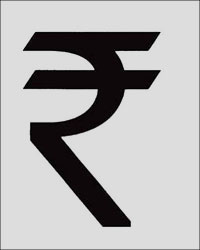|
India Facts Indian Economy
|
|||||
Two decades ago, India initiated an economic reforms programme aimed at transforming a socialist economy to a market driven economy. The annual growth rate of the economy had stagnated at around 3.5% from the 1950s to the 1980s and was sometimes disparagingly referred to as the "Hindu rate of growth". The fruits of the reforms programme reached their peak in FY ended March 2007, when India recorded its highest GDP growth rate of 9.6%. |
Passage to India • Overview • History • Dateline of Events • Time Periods • Geography • Polity • Religion • Festivals • Languages • Dress • Travel Tips • Special Features | ||||
 The GDP Growth in past 8 financial years has been:
The GDP Growth in past 8 financial years has been:According to the CIA World Fact Book, the top 10 economies are now the US, China, Japan, Germany, France, Brazil, UK, Italy, Russia and India. The Indian Economy is now the 10th largest economy in the world; the 3rd largest if measured by Purchasing Power Parity (PPP). Indian GDP crossed the $1.0 trillion mark in FY 2007-08 and it is expected to become a 2 trillion economy this year. Its PPP at the end of 2013 was $ 6.76 trillion (IMF estimates). India's economic growth was below 5% in the past two financial years, but has recovered from its relative slump; thanks in part to effective policies and a renewal of confidence, growth is expected once again to exceed 5% starting the current financial year. IMF prediction for FY 14 -15 GDP growth is 5.6%, based primarily on political stability and ongoing reforms initiated by the new government
Per Capita Income - an inflection point reached
Growth: Capable of being one of the fastest growing economies The Services sector is the fastest growing sector in the economy and accounts for 57% of the GDP. Industry accounts for 26% and Agriculture 17%. The contribution of the services sector to the Indian economy has been manifold: a 57 per cent share in gross domestic product (GDP), growing by 10 per cent annually, contributing to about a quarter of total employment, accounting for a high share in foreign direct investment (FDI) inflows and over one-quarter of total exports.
In the context of the present global economic slowdown, it is positive that the economy is primarily driven by domestic consumption. Economies that followed the export-oriented model suffered badly in the past couple of years. The rapidly growing middle class is also expected to lead to a large consumption boom contributing to economic growth. Contrary to popular perception, growth is also being witnessed in the rural areas (even though they still have a long way to go). In 2002, the rate of telephony penetration in rural areas was 1.2%; today, it has crossed 21%. The National Rural Employment Guarantee Scheme (NREGA) now covers 50 million households.
Population: Second largest in the world Threats to the Indian Economy
Aiming for higher growth
India vs China
Rajiv
Butalia
October 2014
|
|||||
Editor: Romola Butalia (c) India Travelogue. All rights reserved. |
|||||
